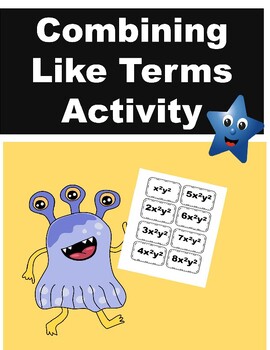Combining Like Terms: Hands-On Algebra Activity Packet
- PPTX
Also included in
- This bundle combines 10 Algebra resources for maximum instructional variety. Sure to reach all learners with many of choices of worksheet types. Items included:Card gamesColor by NumberJokes and RiddlesGreat for end-of-the-year math review.Entire collection is no prep with answer keys included.Price $28.29Original Price $31.43Save $3.14
Description
This Combining Like Terms Activity Packet includes cards and a card mat that gives student a tangible way to understand simplifying expressions. Simply cut out the cards and follow the included instructions. The students will place like cards together to make simplifying the equation make sense. Great for math literacy and all things algebra, since it includes whole numbers, different variables/coefficients, and exponents. Teachers can choose between multiple activities where students are asked to group terms together and sometimes solve for x and y. Guaranteed to make learning fun! Can be used with the standard curriculum, test prep, math fluency, family night activity, Math Olympics, math stations, end-of-the-year review, and Montessori learning.
This packet works well with essential unit overview that allows teachers to assess student comprehension. This game is CCSS-Aligned as it allows students to practice exponent notation, order of operations, and properties of operations. They apply the properties of operations while they generate equivalent expressions (in the bonus portion). Use as group work to get students out of their seats and fully engaged in learning.






